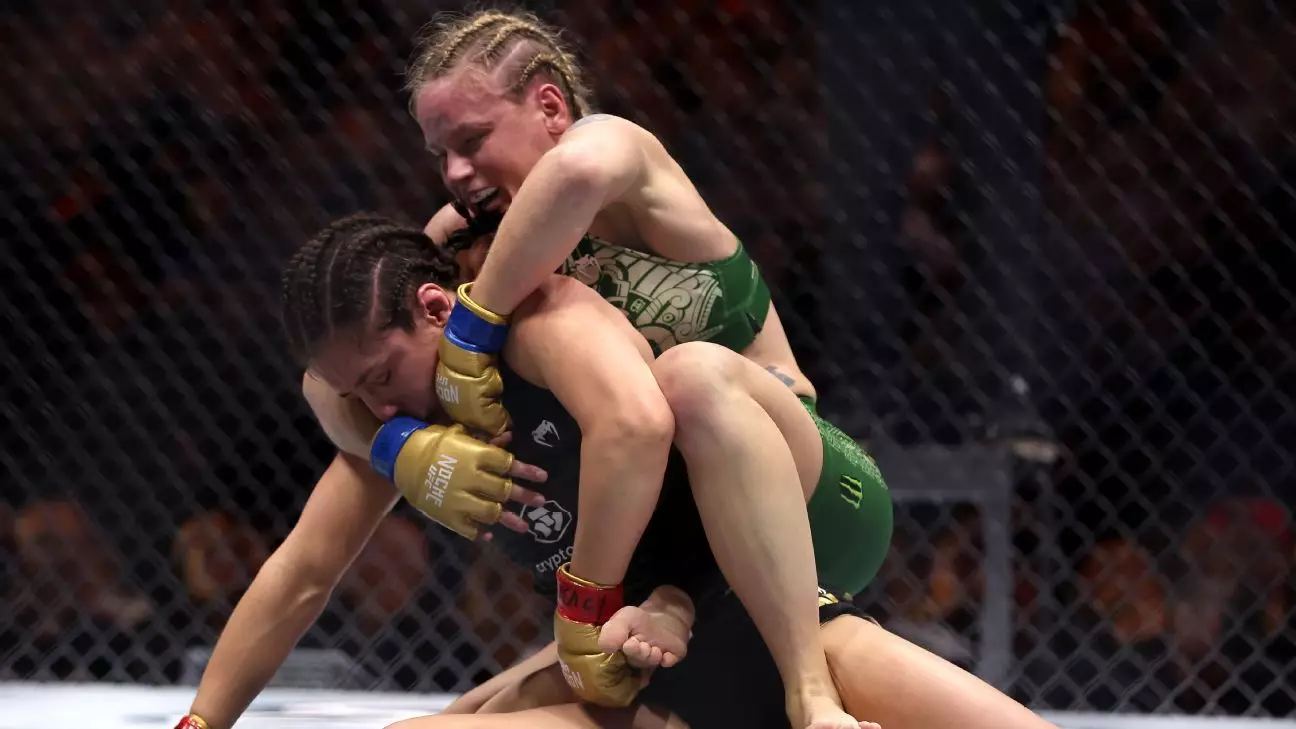The world of combat sports holds a special place for rivalries, especially when elite athletes engage in a sequence of bouts that capture the imagination of fans and thinkers alike. This was vividly on display on Saturday night in Las Vegas, as the UFC witnessed the culmination of its first-ever trilogy in women’s history, featuring the enduring clash between Valentina Shevchenko and Alexa Grasso. With thrill and tension uprooting themselves in the arena, Shevchenko walked away victorious, reclaiming her flyweight title, but the story encapsulated more than just scores and swagger; it was about redemption, strategy, and leaving a legacy.
It’s often said that the events leading up to a pivotal moment are just as significant as the moment itself. The trilogy between Shevchenko and Grasso reflected an emotional pendulum, swinging from Shevchenko’s initial reign to Grasso’s shocking upset in their first encounter in March 2023. This upset marked a dramatic shift in the landscape of women’s MMA, as Grasso not only snagged the belt but also raised questions regarding Shevchenko’s status as a dominant force in her division.
The rematch, fought in September 2023, continued the riveting saga, culminating in a contentious majority draw that left fans and analysts divided. Critics doubted the justice of the outcome given the unique scoring system of MMA, particularly the debate over a 10-8 score in the final round. Thus, Saturday’s bout stood as the final chance for Shevchenko to reassert her authority and legitimacy in the octagon, and she did so with an extraordinary display of tactical prowess.
A Clinician at Work: Shevchenko’s Game Plan and Execution
Shevchenko, now 35, approached UFC 306 with an arsenal of strategies, primarily focused on controlling the fight through grappling. The outcome was decisively in her favor as evidenced by the unanimous 50-45 scorecards—an acknowledgment of her dominance throughout the five-round contest. Her performance was marked by calculated aggression, as she showcased her ability to nullify Grasso’s offense.
Adopting a grappling-heavy game plan served as not just a tactical choice but a statement of intent. By scoring multiple takedowns in each round, Shevchenko amassed over 16 minutes of control time on the ground, rendering Grasso’s offense negligible given the latter’s inability to mount significant attacks in response. The striking statistics were telling; Grasso only landed 18 significant strikes while Shevchenko dictated the rhythm of the fight from both a distance and in clinch engagements.
Grasso’s Struggles: The Challenge of Countering a Champion
While Grasso’s invasion of Shevchenko’s realm had marked her arrival as a serious contender, the rematch revealed cracks that would emerge even more dramatically in their concluding brush. Despite promising flashes, including submission attempts like the guillotine choke in the fourth round that elicited gasps from the audience, Grasso was unable to find the finishing touch.
The tension in the co-main event was palpable, especially as fans reacted to intermittent lulls in action, but any criticism could not mar Shevchenko’s performance. The emotional weight of her journey, having initially lost the title in 2022 and subsequently facing numerous challenges, found relief in this victory.
Reclaiming her championship status makes Shevchenko’s narrative even more compelling. Being perceived as one of the greatest female fighters in MMA history, her journey reflects resilience in the face of adversity and the undeniable ability to evolve. With talk of her likely facing French contender Manon Fiorot in her next title defense, fans can expect another thrilling chapter in what has become a remarkable saga in women’s combat sports.
As the Sphere reverberated with cheers and applause, it became clear that Shevchenko’s victory at UFC 306 was more than just a title reclaimed; it was about writing the next chapter in a storied career, leaving indelible marks on the canvas of history.


Leave a Reply